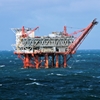
The U.S. Department of the Interior launched new workplace safety rules for the offshore oil and gas industry. The new "stop work" regulations are known as the Safety and Environmental Management Systems (SEMS) II. According to the department, the rules are set to take effect on June 4.
The most recent regulations were established to protect workers in this sometimes hazardous career field. The new regulations are in addition to existing safety rules created more than two years ago, which required offshore operators to submit detailed plans regarding procedures to prevent worker accidents and injuries, Reuters reported.
The government also created the latest regulations in order to encourage companies to advance worker protections. There are also additional requirements in the SEMS II that addressing the guidelines for completing a job safety analysis.
Workers and any other personnel who witness unsafe activity that may increase the chances of an accident or worker injury are permitted to stop work, according to the new regulations. As a result of worker participation in reporting unsafe conditions, employee injuries may decrease and employers awareness of work hazards may increase.
A new employee protection plan was also instituted in SEMS II and creates an environment that promotes participation from both employees and management to eliminate or mitigate hazards on an oil rig.
Third party safety audits are also affected as a result of the new regulations. Companies are now required to commission and submit audits and audit requests to the Bureau of Safety and Environmental Enforcement (BSEE), the department's offshore drilling regulator. The third party servicers must also be accredited and approved by the BSEE, the release said.
"Offshore oil and gas safety starts with a robust positive safety culture, and BSEE's workplace safety rules are designed to promote that culture by eliminating complacency and making sure that companies are looking at the human factors that underlie too many accidents," BSEE Director Jim Watson said in a statement.
Besides stopping work on the oil rig when unsafe conditions are present, employees now have the authority to report safety or environmental violations and threats of danger to the BSEE.
After effects of BP oil spill
A standard of importance was issued to creating SEMS II after the 2010 BP Gulf of Mexico explosion that took the lives of 11 workers on the oil rig. Since the explosion, the Obama administration worked to create several new drilling regulations. The administration also developed ways to improve the oversight of offshore drillers who may be putting worker safety at risk.
Although several companies and oil rigs have proactively made changes since the 2010 rig explosion and oil spill, the DOI felt improvements in the industry were still needed.
"We're tweaking the first rule and adding some requirements we think improve safety and ensure continuous improvement," the DOI said.
The SEMS II program intends to offer more focused attention on the role of human errors and poor organization by management in accidents. SEMS II also helps to encourage continuous improvement in the safety and environmental records of the offshore industry. The DOI hopes the new modifications to the regulations will spark interest in management and even employees to use performance-based operating practices and safety equipment such as natural gas detectors to signal dangerous conditions. It also hopes there will be an growth in collaboration between organizations in the oil and gas industry to promote offshore worker safety as well as environmental protection.
Industrial Safety News brought to you by Safety Systems Technology, Inc., leaders in fire and gas detection systems.